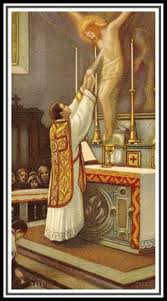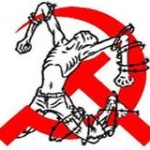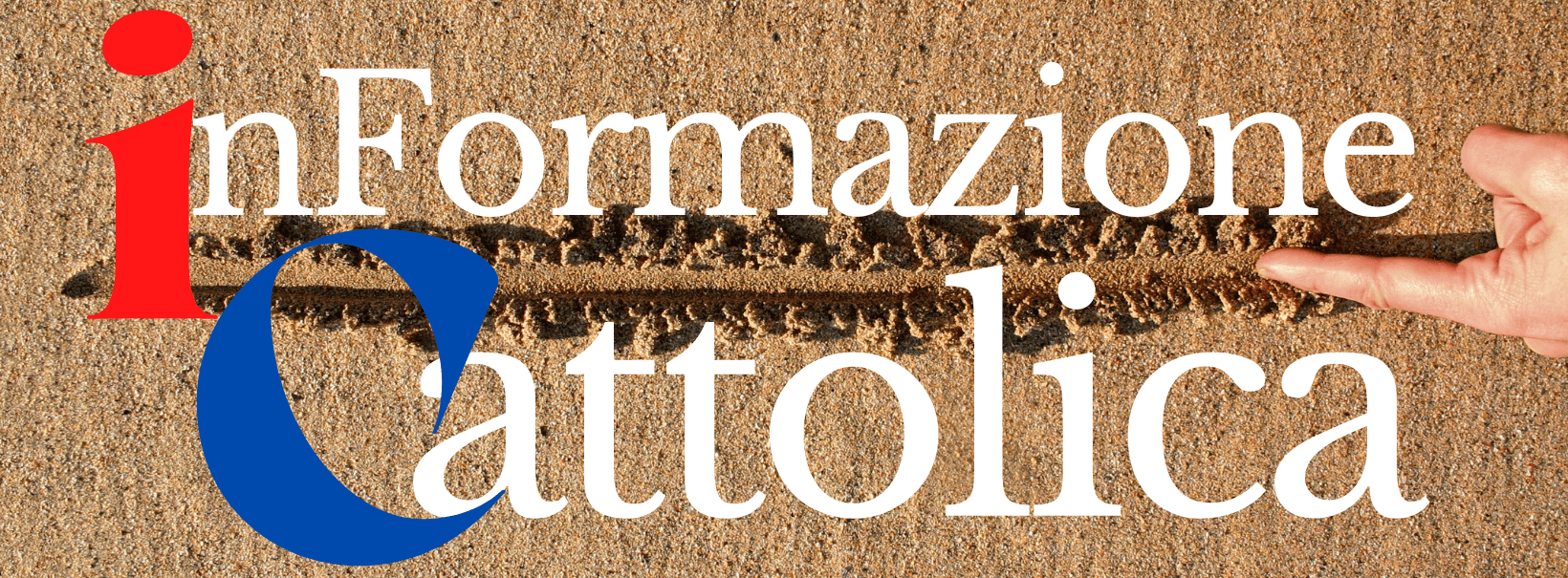Saggio tratto da: CESNUR. CENTRO STUDI SULLE NUOVE RELIGIONI
Massoneria e religioni
a cura di Massimo Introvigne, Elle Di Ci, Leumann (Torino) 1994,
(pubblicato per gentile concessione dell’Editore).
di Michael W. Homer
(1) John Hamill, The Craft: A History of English Freemasonry, Crucible, Wellingborough (Northamptonshire) 1986, p. 88.
(2) Ibid.
(3) Ronald P. Formisano con Kathleen Smith Kutolowskj, “Antimasonry and Masonry: The Genesis of Protest, 1826-1827”, American Quarterly, vol. 29, n. 2 (estate 1977), pp. 139-143.
(4) Cfr. R.P. Formisano, op. cit., p. 143, n. 18; Paul Goodman, Towards a Christian Republic. Antimasonry and the Great Transition in New England, 1826-1836, Oxford University Press, Oxford 1988, p. 3; The Freemason’s Library, Baltimora 1828, citato da Henry Dana Ward, Freemasonry, New York 1828.
(5) Cfr. A Report on the Abduction of William Morgan, New York, 14 febbraio 1829. Questo numero deve essere tuttavia esagerato, giacché The Freemason’s Library, cit., pubblicata un anno prima citava soltanto 157 logge massoniche nello Stato di New York. Cfr. pure Henry Leonard Stillson (a cura di), History of the Ancient and Honorable Fraternity of Free and Accepted Masons, and Concordant Orders, The Fraternity Publishing Company, Boston 1910, p. 261; James C. Odierne, Opinions on Speculative Masonry, Boston 1830, p. 198; R.P. Formisano, op. cit., p. 143.
(6) [Thomas S. Webb], The Freemason’s Monitor; or, Illustrations of Masonry, Spencer and Webb, Albany 1797. Anche prima della fine del Settecento erano stati pubblicati alcuni testi massonici significativi fra cui Welling Calcott, A Candid Disquisition…, Boston 1772.
(7) Jeremy L. Cross, The True Masonic Chart, or Hieroglyphic Monitor, John C. Gray, New Haven 1820. Cfr. pure Thaddeus Mason Harris, Discourses…, Charlestown 1801.
(8) William Morgan, Illustrations of Masonry, presso l’Autore, Batavia (New York) 1826, p. 102.
(9) Masonic Mirror, 27 novembre 1824.
(10) T.S. Webb, op. cit., p. 34.
(11) Masonic Mirror, 27 novembre 1824.
(12) (Rev.) Cheever T. Felch, An Address Delivered before Mount Carmel Lodge at Lynn, June 1821…, Boston s.d., p. 7.
(13) La versione americana più nota di questa letteratura è John Robison, Proofs of a conspiracy against all the religions and governments of Europe carried on in the secret meetings of Freemasons, Illuminati, and reading societies, 4ª ed., G. Forman, New York 1798; tra le traduzioni di opere europee cfr. [Abbé] Barruel, The Anti-Christian and Anti-Social Conspiracy, Joseph Ehrenfried, Lancaster (Pennsylvania) 1812.
(14) John Cosens Ogden, A View of the New England Illuminati: who are indefatigably engaged in destroying the religion and government of the United States; under a feigned regard for their safety – and under an impious abuse of true religion, T. Carey, Philadelphia 1799; Seth Payson, Proofs of the real existence, and dangerous tendency of Illuminism, containing an abstract of the most interesting parts of what Dr. Robison and the Abbé Barruel have published on this subject; with collateral proofs and general observations, Samuel Etheridge, Charlestown (Massachusetts) 1802.
(15) Stanley Upton Mock, The Morgan Episode in American Free Masonry, The Roycrofters, East Aurora (New York) 1930, pp. 28-29.
(16) Cfr. la testimonianza di Lucinda Morgan in A Narrative of the Facts and Circumstances Relating to the Kidnapping and Murder of William Morgan, D.C. Miller, Batavia 1827.
(17) Op. cit.
(18) Wayne Sentinel, 17 novembre 1826. Per un punto di vista anti-massonico sul caso Morgan cfr. Proceedings of United States Anti-Masonic Convention, held at Philadelphia, September 11, 1830, Skinner and Dewey, New York 1830; e David Bernard, Light on Masonry: A Collection of the Most Important Documents on the Subject of Speculative Free Masonry, W. Williams, Utica 1829. Per un punto di vista massonico cfr. Rob Morris, William Morgan: Or Political Anti-Masonry, its Rise, Growth and Decadence, Robert McCoy, New York 1883. Cfr. pure William Preston Vaughn, The Anti-Masonic Party in The United States, 1826-1843, University Press of Kentucky, Lexington (Kentucky) 1983.
(19) D. Bernard, op. cit.
(20) LeRoy Convention, A Revelation of Freemasonry as published to the World by a Convention of Seceeding Masons, Weed and Heron, Rochester 1828.
(21) S.U. Mock, op.cit., pp.119-120, 125-126, 128-129.
(22) Cfr. per esempio Henry Dana Ward, Free Masonry, New York 1828, pp. 1-5.
(23) W. Morgan, op. cit., pp. 69-70; D. Bernard, op. cit., pp. 58-59. Morgan – da cui copia Bernard – ammette che Hiram figura nel Vecchio Testamento (2 Cronache 2, 13) dove peraltro il nome Abiff non è utilizzato.
(24) Cfr. D. Bernard, op. cit., p. 62: “La massoneria professa di condurre gli uomini al Cielo, eppure nega queste benedizioni a una larga maggioranza della famiglia umana. Tutte le donne, e inoltre i vecchi, i giovani e i poveri sono esclusi. Quanto poco questo assomiglia al glorioso Vangelo del Figlio di Dio. In quest’ultimo non c’è nessuna restrizione di persone; i potenti e gli umili, i ricchi e i poveri, i liberi e gli schiavi, gli uomini e le donne, tutti sono uno in Cristo Gesù”.
(25) Secondo gli archivi della Gran Loggia di New York.
(26) La leggenda di Enoch è contenuta nel nono grado (dell’epoca) e discussa dettagliatamente da T.S. Webb, op. cit., pp. 242-247.
(27) Ibid., pp. 249-257.
(28) La leggenda di Hiram Abiff è contenuta nel grado di Maestro massone, ed è discussa da W. Morgan, op. cit., pp. 78-103 e D. Bernard, op. cit., pp. 61-74.
(29) Fra questi emblemi ci sono l’ape e l’occhio “che vede da tutte le parti”; cfr. W. Morgan, op. cit., pp. 78-103; e D. Bernard, op. cit., pp. 61-74.
(30) La decapitazione dell’assassino di Hiram Abiff e il giuramento di vendicare la sua morte sono contenuti nel grado di Cavaliere Eletto; cfr. D. Bernard, op. cit., pp. 196-199.
(31) La restaurazione della parola del Maestro è contenuta nel grado dell’Arco Reale; cfr. D. Bernard, op. cit., pp. 124-144.
(32) Joseph Smith [e altri], History of the Church, nuova ed., Deseret Book Co., Salt Lake City 1978, 7 voll., vol. I, pp. 9-17.
(33) Cfr. Dottrina e Alleanze, Sezioni 78, 92, 96 e 104.
(34) Cfr. Dottrina e Alleanze, Sezione 107.
(35) Cfr., nel Libro di Mormon, il Libro di Ether, capitoli 2, 3 e 15.
(36) Geauga Gazette, 15 marzo 1831.
(37) Alexander Campbell, “The Illusions”, Millennial Harbinger, vol. II, n. 2, 7 febbraio 1831, p. 31.
(38) Jason Whitman, “Notes of Books, The Book of Mormon”, The Unitarian, vol. I, n. 1, 1° gennaio 1834, p. 47.
(39) E.D. Howe, Mormonism Unvailed [sic], Painsville (New York) 1834, p. 81.
(40) E.S. Abdy, Journal of a Residence and Tour in the United States of America, from April, 1833 to October, 1834, 3 voll., Londra 1835, vol. III, pp. 55-56.
(41) LaRoy Sunderland, Mormonism Exposed and Refuted, Piercy & Reed, New York 1838, p. 46.
(42) Un articolo recente che sostiene l’esistenza di riferimenti anti-massonici è quello di Dan Vogel, “‘Mormonism’s Anti-Masonick Bible'”, John Whitmer Historical Association Journal, 9 (1989), pp.17-30. Il migliore articolo che sostiene il punto di vista contrario è quello di Daniel C. Peterson, “Notes on ‘Gadianton Freemasonry'”, in Steven D. Ricks – William J. Hamblin (a cura di), Warfare and the Book of Mormon, Deseret Book Company, Salt Lake City e Foundation for Ancient Research and Mormon Studies, Provo (Utah) 1990, pp. 174-224.
(43) Libro di Mosè, cap. 5.
(44) Cfr. H.D. Ward, op. cit., p. 69; T.S. Webb, op. cit., p. 56.
(45) Cfr. The Telegraph Painesville, Ohio, 2ª serie, vol. II, n. 40, 22 marzo 1931; Ohio Star, citato da Max H. Parkin, Conflict at Kirtland, Salt Lake City 1966, p. 23. Per i problemi trattati in questo e nei successivi paragrafi cfr., più diffusamente, il mio “‘Similarity of Priesthood in Masonry’: The Relationship Between Mormonism and Freemasonry”, Dialogue: A Journal of Mormon Thought, vol. 27, n. 3, primavera 1994, pp. 1-115.
(46) Ebenezer Washington, “Items of Personal History of the Editor”, The Return, voll. I-III (1888-1890), p. 90.
(47) In realtà Joseph Smith si rivolse anzitutto a Thurlow Weed del Rochester Telegraph, un giornale anti-massonico, prima di concludere l’accordo per la pubblicazione del Libro di Mormon con il tipografo E.B. Grandin di Palmyra, nello Stato di New York: così Thurlow Weed, Life of Thurlow Weed, a cura di Harriet A. Weed, Houghton Miffin and Co., Boston 1883, pp. 358-359.
(48) Harris – che abbiamo visto definire il Libro di Mormon, “la Bibbia anti-massonica” – era stato membro del comitato anti-massonico della città di Palmyra nel 1827. Cfr. The Wayne Sentinel, 5 ottobre 1827; e Richard Lloyd Anderson, “Martin Harris, the Honorable New York Farmer”, Improvement Era, vol. 72 (1969), p. 20.
(49) Cfr. D. Bernard, op. cit., pp. 413-417, 452-459; Milton W. Hamilton, Anti-Masonic Newspapers, 1826-1834, The Southworth-Authoesen Press, Portland (Maine) 1939, p. 82. Phelps fondò con R.M. Blumer l’Ontario Phoenix il 28 aprile 1829 a Canandaigua, nello Stato di New York. Egli ricevette una copia del Libro di Mormon il 9 aprile 1830, pochi giorni dopo la fondazione della Chiesa, e continuò a dirigere l’Ontario Phoenix fino al 18 maggio 1831, quando si convertì al Mormonismo. Cfr. pure The Wayne Sentinel (pubblicato a Palmyra, Stato di New York), vol. V, n. 24, 7 marzo 1828: dopo avere ripudiato la massoneria nel 1828 Phelps annunciava la sua intenzione di pubblicare i segreti dei vari gradi massonici.
(50) William Morgan e sua moglie avevano abitato sopra l’ufficio di Harris a Batavia. Harris venne espulso dalla Loggia di Batavia n. 433 il 15 agosto 1826 “per l’enorme depravità della sua condotta massonica”. Una notizia della sua espulsione venne pubblicata dalla loggia lo stesso giorno di una “Notizia e messa in guardia” contro William Morgan, definito “un impostore e un uomo pericoloso“: Masonic Mirror and Mechanic’s Intelligencer, vol. II, n. 36, 2 settembre 1826, p. 290. Dopo la morte di Morgan la vedova, Lucinda, e il suo amico Harris dichiararono che un corpo trovato sulle sponde del Lago Ontario era quello di William Morgan. Si sbagliavano, perché si trattava di un canadese chiamato Timothy Munro: cfr. Rob Morris, op. cit., pp. 258-259.
(51) Pomeroy Tucker, Origin, Rise, and Progress of Mormonism, D. Appleton & Co., New York 1867.
(52) Orsamus Turner, History of the Pioneer Settlement of Phelps and Gorham’s Purchase, William Alling, Rochester 1851. Orsamus Turner fu tra le poche persone imprigionate nell’indagine sul rapimento di William Morgan: cfr. R. Morris, op. cit., pp. 191-192, 206, 209, 224, 228.
(53) Orson F. Whitney, Life of Heber C. Kimball, Stevens & Wallis, Salt Lake City 1945, pp. 11-12.
(54) Millennial Star, n. 26, 23 luglio 1864, pp. 471-472.
(55) R. Morris, op. cit., pp. 276-277.
(56) Ibid., pp. 277-278.
(57) Anti-Masonic Review, 11 dicembre 1830.
(58) Donna Hill, Joseph Smith, The First Mormon, Doubleday and Co., Garden City (New York) 1977, p. 227.
(59) Cfr. Wilhelm Wyl, Mormon Portraits, Joseph Smith the Prophet, his Family and his Friends, Tribune Publishing Company, Salt Lake City 1886, p. 60; Daniel W. Bachman, A Study of the Mormon Practice of Plural Marriages Before the Death of Joseph Smith, tesi di dottorato, Purdue University, dicembre 1975, pp. 112-113.
(60) Martha Taysom, “Is There No Help for the Widow? The Strange Life of Lucinda Pendleton Morgan Harris”, relazione inedita presentata al congresso annuale della Mormon History Association, Lamoni (Iowa), maggio 1993, p. 5.
(61) Andrew Jensen, The Historical Record, dicembre 1899; Benjamin F. Johnson, My Life’s Review, Zion’s Printing and Publishing Company, Independence (Missouri) 1947, p. 61; Lee County Democrat, 1° ottobre 1842; Helen Mar Whitney, “Scenes and Incidents in Nauvoo”, Women’s Exponent, vol. X, p. 26; R. Morris, op. cit., p. 279.
(62) Deseret News, 22 novembre 1875.
(63) Proceedings of the Grand Lodge of Illinois, 1840, pp. 1-5.
(64) Mervin B. Hogan, “Mormonism and Freemasonry: The Illinois Episode”, The Little Masonic Library, II (1977), p. 311.
(65) [J. Smith e altri], History of the Church, cit., vol. IV, pp. 168-170, 172.
(66) Ibid., vol. IV, pp. 177-179.
(67) Ibid., vol. IV, pp. 270-271.
(68) Ibid., vol. IV, pp. 275-276.
(69) Ibid., vol. IV, pp. 287, 293, 295-296, 341.
(70) John C. Reynolds, History of the M.W. Grand Lodge of Illinois, H.G. Reynolds Jr., Springfield (Illinois) 1869, p. 154; Records of Bodley Lodge No. 1.
(71) J.C. Reynolds, op. cit., p. 184.
(72) S.H. Goodwin, Mormonism and Masonry: A Utah Point of View, Sugarhouse Press, Salt Lake City 1921, p. 4.
(73) Mervin B. Hogan (a cura di), Founding Minutes of the Nauvoo Lodge, U.D., Research lodge No. 2, Des Moines (Iowa) 1971, pp. 8 e 10.
(74) [J. Smith e altri], History of the Church, vol. IV, pp. 550, 566.
(75) Ibid., vol. V, pp. 12, 71.
(76) [J. Smith e altri], History of the Church, vol. V, pp. 71-73.
(77) Mervin B. Hogan, The Confrontation of Grand Master Abraham Jonas and John C. Bennett in Nauvoo, presso l’Autore, Salt Lake City 1976, pp. 8-9.
(78) Proceedings of the Grand Lodge of Illinois, 1842, p. 78; Dean Jessee (a cura di), The Papers of Joseph Smith, 2 voll., Deseret Book Company, Salt Lake City 1989-1992, vol. II, p. 387.
(79) In Times and Seasons, vol. III, 1° luglio 1842, pp. 839-843.
(80) J.C. Reynolds, op. cit., pp. 174-175.
(81) Ibid., p. 175.
(82) S.H. Goodwin, op. cit., p. 13.
(83) Proceedings of the Grand Lodge of Illinois, 1842, pp. 59-60.
(84) J.C. Reynolds, op. cit., p. 174.
(85) Proceedings of the Grand Lodge of Illinois, cit., pp. 71-72; J.C. Reynolds, op. cit., pp. 172-173.
(86) Ibid., p. 226; Proceedings of the Grand Lodge of Illinois, 1844, pp. 120-121.
(87) [J. Smith e altri], History of the Church, vol. V, p. 446.
(88) J.C. Reynolds, op. cit., pp. 192-193.
(89) Ibid., pp. 199-200; Proceedings of the Grand Lodge of Illinois, 1842, pp. 96-97.
(90) J.C. Reynolds, op. cit., p. 244.
(91) [J. Smith e altri], History of the Church, cit., vol. VI, p. 287.
(92) J.C. Reynolds, op. cit., pp. 254-257.
(93) Times and Seasons, vol. V, p. 585 (15 luglio 1844).
(94) J.C. Reynolds, op. cit., p. 232.
(95) Ibid., p. 228.
(96) Ibid., p. 261.
(97) Lettera di Heber C. Kimball a Parley P. Pratt, 17 giugno 1842, Parley P. Pratt Papers, Archivi della Chiesa di Gesù Cristo dei Santi degli Ultimi Giorni, p. 80.
(98) Benjamin F. Johnson, My Life’s Review, cit., p. 96.
(99) Journal of Discourses, vol. 18, p. 303.
(100) Ibid., vol. 11, pp. 327-328.
(101) Ibid., vol. 18, p. 303.
(102) Manuscript History of Brigham Young, 13 novembre 1858, p. 1085.
(103) Andrew F. Ehat (a cura di), “‘They might have known that he was not a Fallen Prophet’ – The Nauvoo Journal of Joseph Fielding”, BYU Studies, vol. 19, n. 2 (inverno 1979), pp. 145-147.
(104) Horace Cummings, “History of Horace Cummings”, Harold B. Lee Library, Brigham Young University, citata da Kenneth W. Godfrey, Causes of Mormon / Non-Mormon Conflict in Hancock County, Illinois, 1839-1846, tesi di laurea, Brigham Young University, 1967, p. 86. Una parte del diario di Horace H. Cummings venne pubblicata sul Juvenile Instructor, un periodico mormone, nell’agosto 1929. In questa versione la spiegazione del rito massonico da parte di Joseph Smith viene riferita nei termini seguenti: “Alcuni dei primi avvenimenti che fecero grande impressione sulla mia mente e furono per me un’utile lezione mi furono raccontati da mio padre. I suoi genitori, che avevano una famiglia numerosa, vivevano a Nauvoo ed erano piuttosto intimi con il profeta Joseph. In effetti suo padre, che era un Maestro massone, officiava quando il profeta venne condotto attraverso i gradi della massoneria. Mentre questo avveniva il profeta spiegò molte cose sul rito che gli stessi massoni non pretendono di capire, ma che egli rese chiare e meravigliose” (Horace H. Cummings, “True Stories from my Journal”, Juvenile Instructor, vol. 64, n. 8, agosto 1929, p. 441).
(105) Juvenile Instructor, vol. 21, n. 6, 15 marzo 1886, p. 91.
(106) Franklin D. Richards, “The Temple of the Lord”, Juvenile Instructor, vol. 26, n. 23, 1° dicembre 1891, ristampato in The Utah Genealogical and Historical Magazine, vol. 11, n. 4, ottobre 1920, p. 147.
(107) Diario di Rudger Clawson, 4 aprile 1899, Papers of Rudger Clawson, collezioni speciali, Biblioteca Marriott, University of Utah, Salt Lake City, Utah; pubblicato in A Ministry of Meetings. The Apostolic Diaries of Rudger Clawson, a cura di Stan Larson, Signature Books, Salt Lake City 1993, p. 42.
(108) Ibid., p. 380.
(109) Nelson Winch Green, Fifteen Years Among the Mormons, H. Dayton, New York 1859, pp. 49-50.
(110) Ann Eliza Young, Wife No. 19, Dustin, Gilman & Co., Hartford (Connecticut) 1875, p. 371.
(111) [Mrs. T.B.H.] Stenhouse, “Tell it All”: The Story of a Life’s Experience in Mormonism, A.D. Washington & Co., Hartford (Connecticut) 1874, p. 354.
(112) Cfr. Richard F. Burton, The City of the Saints, Longman, Green, Longman & Roberts, Londra 1861, p. 271 (tr.it.: I Mormoni e la Città dei Santi, Fratelli Treves, Milano 1875); Phil Robinson, Sinners and Saints, Sampson, Law, Marston, Searle & Rivington, Londra 1883, p. 139; Rudyard Kipling, From Sea to Shining Sea, 2 voll., Doubleday & McClure Co., New York 1899, vol. II, p. 111.
(113) In realtà i massoni – qualunque cosa pensino i mormoni – credono che la parola perduta sia stata nuovamente scoperta da loro, e sia trasmessa nel grado dell’Arco Reale (cfr., per esempio, W. Morgan, op. cit., p. 102).
(114) Times and Seasons, vol. V, p. 585 (15 luglio 1844).
(115) Deseret News, 27 novembre 1875, che ristampa un articolo del Chicago Times. Cfr. John C. Stearns, An Inquiry into the Nature and Tendency of Speculative Free-Masons, Utica (New York) 1826. Dopo questa edizione – che precede anche il libro di William Morgan – una quinta edizione considerevolmente ampliata venne pubblicata nel 1829 – da Northway & Porter, Utica (New York) – e più volte ristampata.
(116) Cfr. sul punto, con ulteriori osservazioni, il mio “Masonry and Mormonism in Utah, 1847-1984”, Journal of Mormon History, vol. 18, n. 2, primavera 1992, pp. 51-96.
(117) City of the Saints in Picture and Story, Deseret News, Salt Lake City 1906, p. 34; Douglas F. Tobler – Nelson B. Wadsworth, The History of Mormons in Photographs, St. Martin’s Press, New York 1989, pp. 10, 11, 23, 148; On the Mormon Frontier: The Diary of Hosea Stout, a cura di Juanita Brooks, 2 voll., University of Utah Press, Salt Lake City 1964, vol. II, pp. 415, 423.
(118) Wilford Woodruff, Wilford Woodruff’s Journal, a cura di Scott G. Kinney, 9 voll., Signature Books, Midvale (Utah) 1984, vol. 5, p. 482.
(119) Gustin Gooding, First 100 Years of Freemasonry in Utah (ristampato con il titolo The History of Utah Masonry), Franklin Lodge No. 27, Salt Lake City 1983; Samuel H. Goodwin, Freemasonry in Utah, Thirty Years of Mt. Moriah Lodge No. 2 F & A.M. 1866-1896, presso l’Autore, Salt Lake City 1930, p. 6.
(120) Norman H. Furniss, The Mormon Conflict, 1850-1859, Yale University Press, New Haven (Connecticut) 1960, pp. 76, 119-120, 127, 196.
(121) W. Woodruff, op. cit., vol. 5, p. 483.
(122) Journal of Discourses, vol. 9, pp. 180, 182; vol. 10, pp. 125-126.
(123) Edward W. Tullidge, The History of Salt Lake City and Its Founders, s.e., Salt Lake City 1886, Appendice, pp. 15-18.
(124) 1866 Proceedings of the Grand Lodge of Nevada, Carson City (Nevada) 1866, pp. 120-121, 124, 165-167; 1867 Proceedings of the Grand Lodge of Nevada, Carson City (Nevada) 1867, p. 288.
(125) S.H. Goodwin, op. ult. cit., p. 14.
(126) Ibid., p. 15.
(127) 1867 Proceedings of the Grand Lodge of Nevada, cit., pp. 288-289.
(128) Journal of Discourses, vol. 11, pp. 327-328.
(129) Sam H. Goodwin, Freemasonry in Utah: The First Decade of Argenta Lodge No. 3 and its First Master, presso l’Autore, Salt Lake City 1925, pp. 8-9.
(130) “Report of Committee on Jurisprudence”, in 1899 Proceedings of the Grand Lodge of Utah, Tribune Printing and Publishing Co., Salt Lake City 1899, p. 33.
(131) S.H. Goodwin, op. ult. cit., p. 17.
(132) 1882-83 Proceedings of the Grand Lodge of Utah, s.e., Salt Lake City 1883, pp. 18, 24-25.
(133) Sam H. Goodwin, “A Study of Mormonism and its Connection with Masonry in the Early Forties”, in The Builder, vol. 7, n. 2, febbraio 1921, pp. 36-42; e vol. 7, n. 3, marzo 1921, pp. 64-70.
(134) Cfr., per esempio, B.H. Roberts, “Masonry and ‘Mormonism'”, in Improvement Era, vol. 24, agosto 1921, pp. 939-973; Anthony W. Ivins, The Relationship of “Mormonism” and Freemasonry, Deseret News Press, Salt Lake City 1934; e E. Cecil McGavin, “Mormonism” and Masonry, Deseret News Press, Salt Lake City 1935.
(135) 1925 Proceedings of the Grand Lodge of Utah, Salt Lake City 1925, pp. 48 e 65.
(136) 1927 Proceedings of the Grand Lodge of Utah, Salt Lake City 1927, pp. 65-66.
(137) 1958 Proceedings of the Grand Lodge of Utah, Salt Lake City 1958, pp. 70-72, 80, 99-100, 104-105.
(138) 1965 Proceedings of the Grand Lodge of Utah, Salt Lake City 1965.
(139) 1983 Proceedings of the Grand Lodge of Utah, Salt Lake City 1983, p. 61.
(140) 1984 Proceedings of the Grand Lodge of Utah, Salt Lake City 1984, p. 63.




